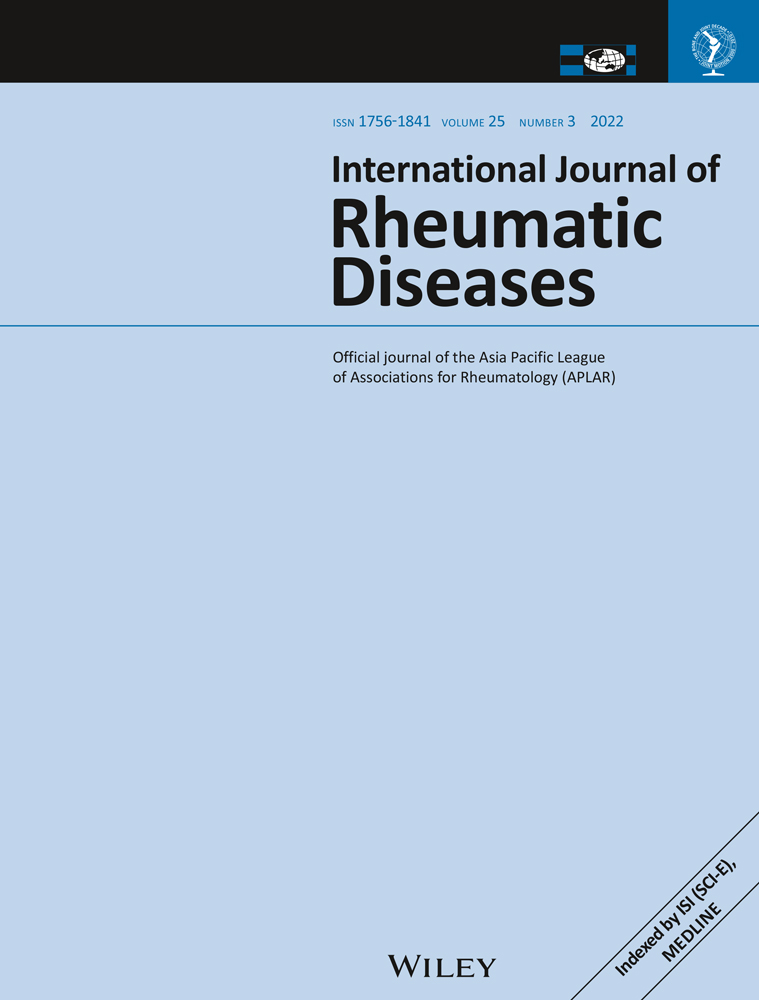Early control of C-reactive protein levels with non-biologics is associated with slow radiographic progression in radiographic axial spondyloarthritis
Bon San Koo and Seunghun Lee contributed equally to this work.
Abstract
Aim
Predicting radiographic progression is vital for assessing the prognosis of patients with radiographic axial spondyloarthritis, and C-reactive protein (CRP) may be a valuable biomarker for this purpose. This study aimed to investigate the relationship between changes in the CRP level and spinal radiographic progression in patients with radiographic axial spondyloarthritis who were initially treated with non-biologics.
Methods
Patients with radiographic axial spondyloarthritis who were followed up for 18 years at a single center and initially treated with nonsteroidal anti-inflammatory drugs and/or conventional disease-modifying antirheumatic drugs for 3 months were included. Patients with a CRP level of <0.8 mg/dL or 50% of the baseline CRP at 3 months were assigned to the controlled CRP group (n = 351), and the remaining patients were assigned to the uncontrolled CRP group (n = 452). A generalized estimating equation was used to analyze the differences in the modified Stoke Ankylosing Spondylitis Spinal Score (mSASSS) between the 2 groups.
Results
The increase in the mSASSS was slower in the controlled CRP group than in the uncontrolled CRP group (interaction term β = −.499, 95% confidence interval −0.699 to −0.300).
Conclusion
Controlled CRP achieved in response to initial treatment with non-biologic agents for 3 months was significantly associated with a slower rate of spinal radiographic change in patients with radiographic axial spondyloarthritis. The CRP level at 3 months after initial non-biologic treatment is a good predictor of radiographic progression.
CONFLICT OF INTEREST
All authors have declared no competing interests.




